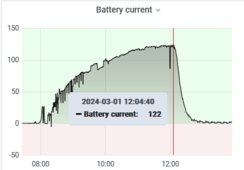I'm still getting the T fuse, but just out of curiosity, my 5 parallel rack batteries each have a 125 amp breaker built in. Theoretically, this should prevent arcing inside an ANL fuse in the case of some kind of catastrophic failure, right? They are wired into a fully enclosed bus bar, and from there a short (1 ft) wire goes to the fuse holder.
I actually had an electrician install my transfer switch and other stuff and mount everything on the wall just because I didn't want to deal with that hassle. He also wired up the batteries while he was there.
The guy was using 6 AWG wire for everything despite me telling him the inverter is rated to draw up to 220 amps from the batteries. I said something along the lines of "I think we should have a fuse or breaker here?" and he said "the manual doesn't call for one so I won't do that".
I also wanted to use a bus bar, but same thing. "The manual doesn't say to use one" and he just paralleled them directly to each other since the batteries have two binding posts on + and -.
He also refused to use a resistor when initially connecting the inverter positive terminal to prevent a spark. Can you guess the reason?
Needless to say, as soon as he was gone, I started rewiring the batteries and I'll never use him again. Will just call a local solar installer if I need more work done on this that I can't handle myself. Someone who actually has experience with these inverter systems. Mainly just wanted him for the main electrical panel and transfer switch wiring to make sure it meets code.




